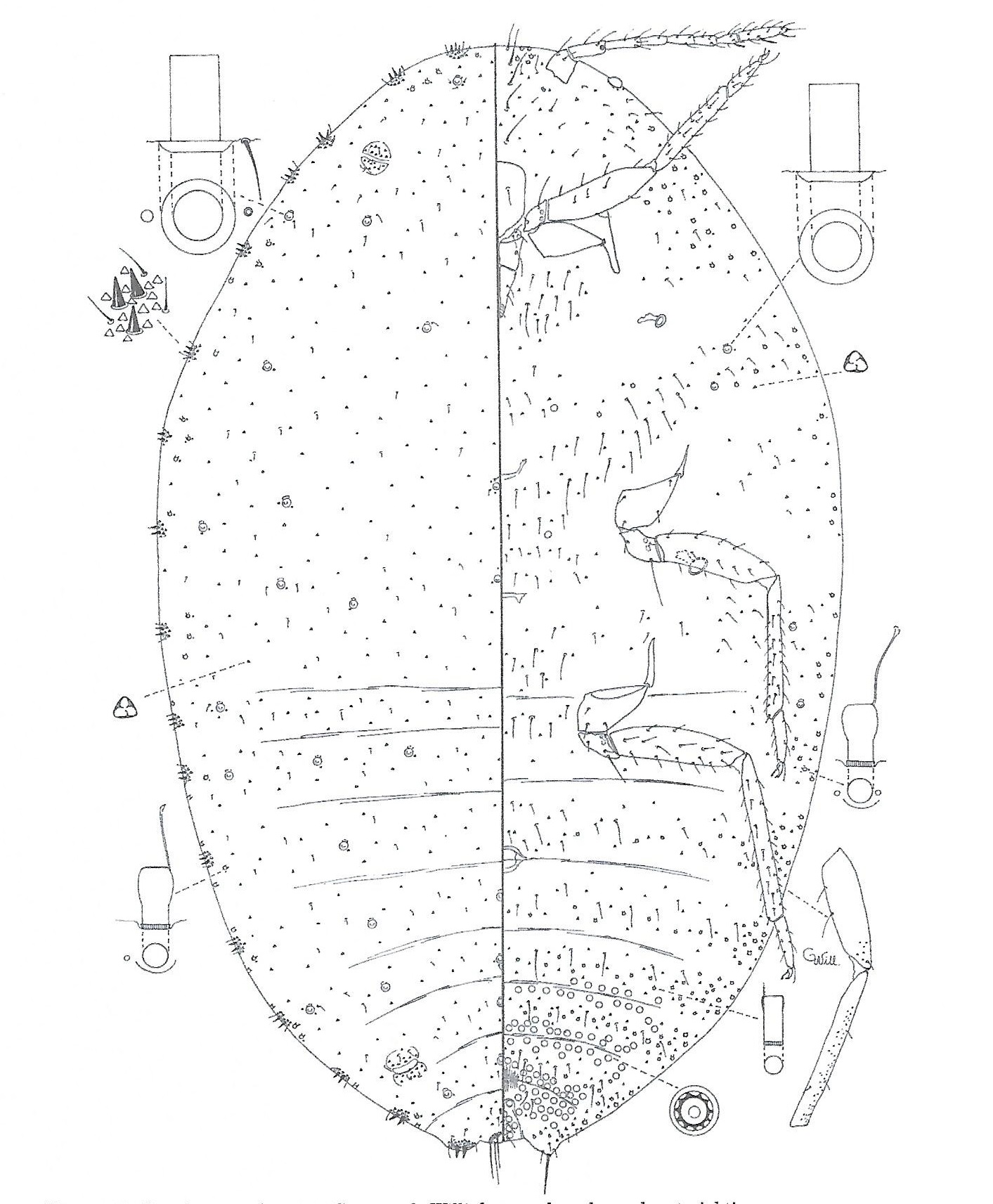Valid Names Results
Pseudococcus dumetum Granara de Willink, 2018 (Pseudococcidae: Pseudococcus)Nomenclatural History
- Pseudococcus dumetum Granara de Willink 2018: 27. Type data: ARTENTINA: Santiago del Estero, Termas de Río Hondo, 10/3/1995, by M.C.G. Willink. Holotype, female, by original designation Type depository: Tucuman: Fundacion e Instituto Miguel Lillo, Universidade Nactional de Tucuman, Argentina; accepted valid name Illustr.
Common Names
Ecological Associates
Geographic Distribution
Countries: 1
- Argentina | GranarGo2018
Keys
- GranarGo2018: pp.10-14 ( Adult (F) ) [Central & South American Pseudococcus]
Remarks
- Systematics: Pseudococcus dumetum is similar to P. jackbeardsleyi because both have submarginal ducts with dorsal rims; antennas and legs a similar length r and lack a duct with an oral rim between C2 and C3. They differ because P. dumetum has 1) eyes with pores on membranous surface (sclerosed surface in P. jackbeardsleyi); 2) multilocular pores up to segment V (up to IV in P. jackbeardsleyi); 3) translucent pores on the distal part of the femur (along the posterior femur in P. jackberdsleyi); and 4) segment VII with avduct with oral rim in the midline (duct absent in P. jackberdsleyi). (Granara de Willink & González, 2018.)
- Structure: Translucent pores on the femur and tibia; eyes with two discoidal pores on a membranous surface with ducts with , submarginal oral collars; ducts with oral rim with discoidal pores near the margin on cephalothorax and abdomen, present in frontal zone and absent between C2 and C3; Cerarii 17 pairs; multilocular pores in ventral abdomen to segment V; four tubular ducts with oral rims between C5 and C11; tubular ducts with oral collar approximately 30 from frontal zone until C5 and scarce in the later segments. (Granara de Willink & González, 2018.)
- General Remarks: Detailed description and illustration in Granara de Willink & González, 2018.
Illustrations
Citations
- CaballPaKa2021: morphology, 8
- GranarGo2018: description, diagnosis, distribution, host, key, taxonomy, 10-14, 27



